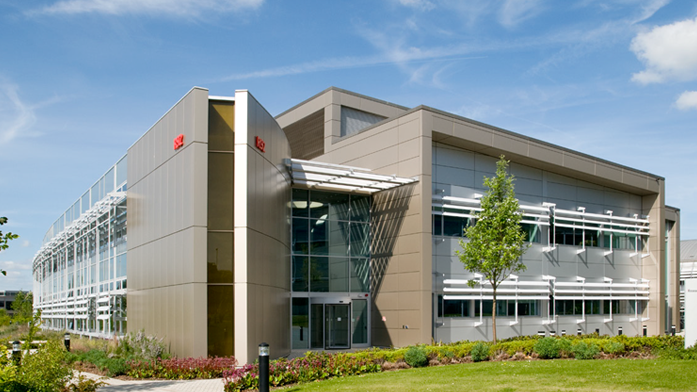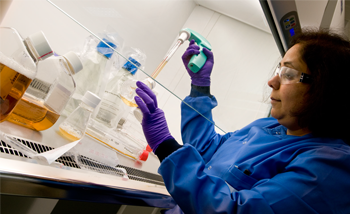- Diamond Light Source
- News & Literature
- Print Publications
- Diamond News
- Autumn 2016
- Research Complex at Harwell
Keep up to date with the latest research and developments from Diamond. Sign up for news on our scientific output, facility updates and plans for the future.
 The Research Complex at Harwell (RCaH) opened its doors in 2010 and is now firmly established as a vibrant centre of excellence for researchers looking for a long term base at the heart of the Harwell campus. It also serves scientists who need short term access to state-of-the-art experimental tools and techniques in the life or physical sciences, enabling them to enhance their research, access on-site expertise, and form new collaborations.
The Research Complex at Harwell (RCaH) opened its doors in 2010 and is now firmly established as a vibrant centre of excellence for researchers looking for a long term base at the heart of the Harwell campus. It also serves scientists who need short term access to state-of-the-art experimental tools and techniques in the life or physical sciences, enabling them to enhance their research, access on-site expertise, and form new collaborations.
Today, the RCaH, which is managed by the MRC on behalf of RCUK, in partnership with BBSRC, EPSRC, NERC, STFC and Diamond, provides a national focus for academic and industrial researchers to incubate scientific interactions with the world-class facilities (synchrotron, neutron, laser) on the Harwell campus. Research groups benefit from cutting edge facilities, both in-house and across the campus, enabling them to carry out world-class research in life and physical sciences, and at the interface between them.
 Nahid Rahman in the tissue culture lab of the Oxford Protein Production Facility-UK (OPPF-UK); a core facility for protein production and crystallisation located at the RCaH.
Nahid Rahman in the tissue culture lab of the Oxford Protein Production Facility-UK (OPPF-UK); a core facility for protein production and crystallisation located at the RCaH.
“Last year, we achieved a world first with the help of the powerful imaging techniques on Diamond’s Microfocus Spectroscopy beamline (I18). Together with researchers from BASF and Diamond, we successfully revealed the molecular level chemical structure and location of catalysts during operation in the liquid phase. We have built up excellent working relationships with the scientists across the campus. This means we can design really ambitious experiments, fully maximising the imaging capabilities, and recreating conditions close to the working conditions of a commercial catalyst.”
Professor Andy Beale
“Our location also allows us to regularly participate in the science workshops and conferences that take place on the campus, such as the Diamond/Infineum iCAR conference, which brings together researchers from academia and industry, all of whom are working in the field of automotive research. These events enable us to see the bigger picture and appreciate the challenges that industry faces now and in the future. The next generation of materials that are going to enhance our lives and save our planet are in development now, and are being tested at large-scale facilities such as Diamond.”
Multi-scale X-ray imaging
Imaging is a pervasive theme at the RCaH, and the Manchester X-ray Imaging Facility group develop unique environmental cells that replicate the processing and service conditions of materials whilst imaging with X-rays or neutrons. Applications range from improving super-alloy turbine blades to determining how ice crystal formation in ice cream affects taste. Other projects include measuring strains at the nano-scale in whole arthritic joints and replicating magma flow in the earth’s crust.
Diamond Light Source is the UK's national synchrotron science facility, located at the Harwell Science and Innovation Campus in Oxfordshire.
Copyright © 2022 Diamond Light Source
Diamond Light Source Ltd
Diamond House
Harwell Science & Innovation Campus
Didcot
Oxfordshire
OX11 0DE
Diamond Light Source® and the Diamond logo are registered trademarks of Diamond Light Source Ltd
Registered in England and Wales at Diamond House, Harwell Science and Innovation Campus, Didcot, Oxfordshire, OX11 0DE, United Kingdom. Company number: 4375679. VAT number: 287 461 957. Economic Operators Registration and Identification (EORI) number: GB287461957003.